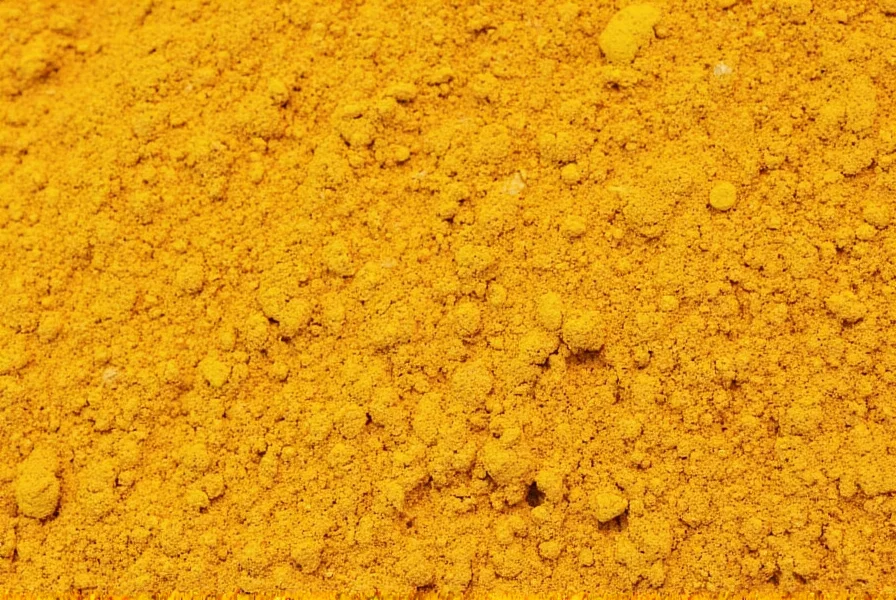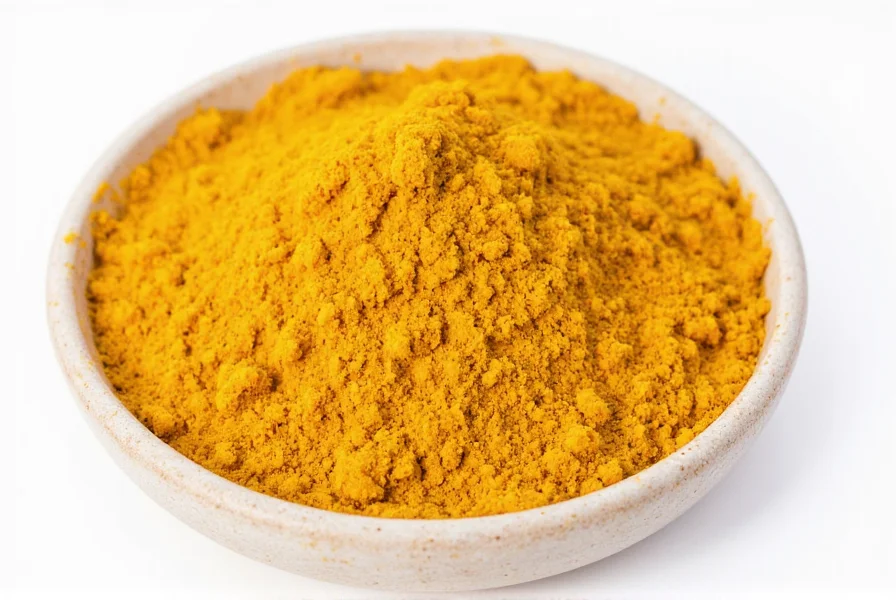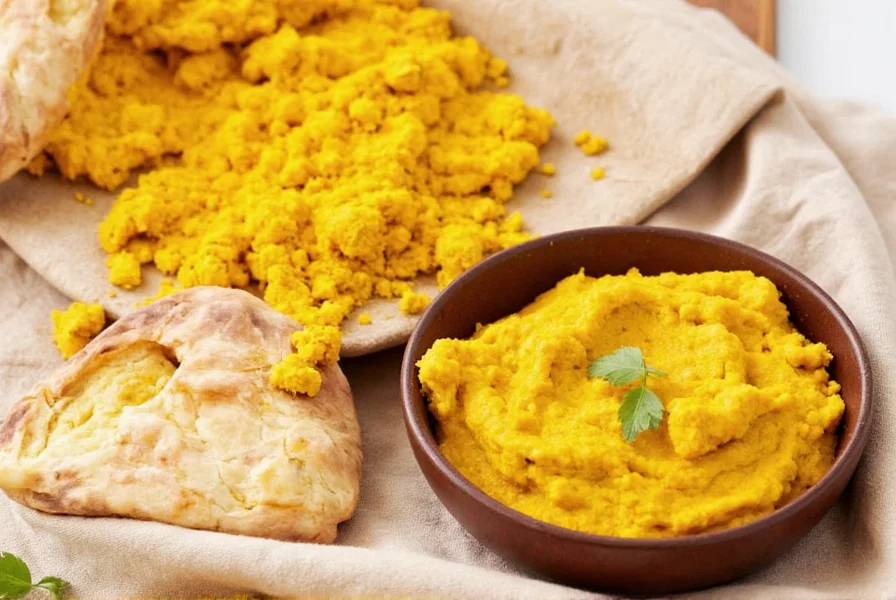Golden yellow and earthy with a subtle peppery warmth, turmeric transforms ordinary dishes into vibrant, health-boosting meals. This ancient spice, revered in Ayurvedic medicine for millennia, has gained modern scientific validation for its potent anti-inflammatory effects. When prepared correctly, turmeric recipes deliver both exceptional flavor and measurable health benefits—but many home cooks miss the critical step that unlocks its full potential. Understanding how to properly incorporate turmeric into your cooking makes all the difference between a mildly interesting dish and a truly transformative culinary experience.
The Science Behind Effective Turmeric Cooking
Curcumin, turmeric's active compound, has notoriously low bioavailability when consumed alone. Research published in Planta Medica demonstrates that combining turmeric with piperine (found in black pepper) increases curcumin absorption by 2,000%. Similarly, consuming turmeric with healthy fats—like coconut oil, olive oil, or avocado—enhances its solubility and effectiveness. These scientific insights form the foundation of truly beneficial turmeric recipes.
Fresh vs. Powdered Turmeric: What Chefs Recommend
While both forms have their place in the kitchen, professional chefs and nutritionists generally recommend using high-quality powdered turmeric for most recipes due to its consistent potency and convenience. Fresh turmeric root offers a brighter, more citrusy flavor but varies significantly in curcumin content depending on growing conditions and freshness.
| Characteristic | Fresh Turmeric Root | Ground Turmeric |
|---|---|---|
| Curcumin Content | Variable (0.5-3.14%) | Consistent (2-6%) |
| Shelf Life | 2-3 weeks refrigerated | 2-3 years in dark container |
| Flavor Profile | Bright, citrusy, grassy | Earthy, warm, peppery |
| Best For | Raw preparations, juices | Cooked dishes, baked goods |
Essential Turmeric Cooking Techniques
Master these professional techniques to maximize both flavor and health benefits in your turmeric recipes:
- Dry toast spices - Briefly toast turmeric powder in a dry pan before use to enhance flavor complexity
- "Bloom" in fat - Heat turmeric in oil for 1-2 minutes before adding other ingredients to increase solubility
- Add early in cooking - Turmeric's flavor develops beautifully when simmered in liquid-based dishes
- Always include black pepper - A minimum of 1/20th turmeric-to-pepper ratio is necessary for absorption
- Store properly - Keep in an airtight container away from light to preserve potency for up to 2 years
5 Science-Backed Turmeric Recipes
Golden Milk Elixir
This upgraded version of the traditional Ayurvedic drink incorporates the latest research on curcumin absorption. Unlike basic recipes that simply mix turmeric with milk, this formulation includes precise ratios of black pepper and healthy fats for maximum benefit.

Turmeric Roasted Vegetable Medley
Root vegetables like sweet potatoes and carrots naturally contain compounds that work synergistically with turmeric. The high-heat roasting process actually increases the bioavailability of curcuminoids while developing complex caramelized flavors.
Anti-Inflammatory Turmeric Chicken Curry
This recipe features a critical technique: adding turmeric early in the cooking process to allow its compounds to meld with coconut milk's healthy fats. The inclusion of both fresh ginger and black pepper creates a triple synergy that significantly boosts the dish's health properties.
Turmeric-Lemon Immunity Smoothie
Unlike juice-based smoothies that discard valuable fiber, this recipe uses the entire lemon (peel included) which contains compounds that enhance turmeric absorption. The addition of chia seeds provides omega-3s that further increase curcumin bioavailability.
Golden Turmeric Rice
Transform ordinary rice into a vibrant side dish with exceptional health benefits. The key is blooming the turmeric in coconut oil before adding the rice, which dramatically increases the absorption of curcumin compared to simply stirring it in at the end.
Common Turmeric Cooking Mistakes to Avoid
Even experienced cooks make these critical errors that diminish both flavor and health benefits:
- Using expired turmeric - Old spice loses up to 85% of its curcumin content
- Omitting black pepper - Without piperine, your body absorbs less than 1% of curcumin
- Adding turmeric too late - Needs time to meld with fats for proper absorption
- Using low-quality turmeric - Many commercial products contain fillers and lower curcumin levels
- Storing improperly - Light and air rapidly degrade turmeric's active compounds
Turmeric Substitution Guide
When you don't have turmeric on hand, these alternatives provide similar color and some comparable benefits, though none match turmeric's unique health profile:
| Substitute | Ratio | Best For | Limitations |
|---|---|---|---|
| Annatto seeds | 1/4 tsp per 1 tsp turmeric | Rice dishes, cheeses | No curcumin benefits |
| Saffron | 1/8 tsp per 1 tsp turmeric | Risottos, sauces | Expensive, different flavor |
| Mustard powder | 1/2 tsp per 1 tsp turmeric | Marinades, dressings | Stronger flavor profile |
| Paprika | 1/2 tsp per 1 tsp turmeric | Stews, rubs | Sweeter, less earthy |
Maximizing Turmeric's Health Benefits in Everyday Cooking
Integrating turmeric into your regular cooking routine requires minimal effort but delivers significant health advantages. Start with these simple strategies that professional chefs use to incorporate turmeric seamlessly into daily meals:
- Add 1/4 teaspoon to morning scrambled eggs with black pepper
- Stir into salad dressings with olive oil and lemon juice
- Include in homemade vegetable broth while simmering
- Mix with avocado for a nutrient-dense spread
- Blend into hummus or bean dips for enhanced flavor
Remember that consistency matters more than single mega-doses. Regular consumption of smaller amounts of properly prepared turmeric provides more sustained health benefits than occasional large doses of poorly prepared spice.

Frequently Asked Questions
How much black pepper should I add to turmeric recipes for maximum absorption?
Research shows that adding just 1/20th of black pepper to turmeric (approximately 1/4 teaspoon pepper per 1 teaspoon turmeric) increases curcumin absorption by up to 2,000%. This small amount provides sufficient piperine without overwhelming the dish's flavor profile.
Can I get the same benefits from turmeric supplements as from cooking with turmeric?
Whole-food turmeric in recipes provides additional beneficial compounds beyond just curcumin, including turmerones and other curcuminoids that work synergistically. While supplements can be useful, food-based turmeric offers a more complete nutritional profile and better absorption when properly prepared with fats and black pepper.
Why does my turmeric stain my cutting board and hands yellow?
Turmeric contains curcuminoids that act as natural dyes. To prevent staining, immediately rinse cutting boards with soapy water after use. For hands, rub with lemon juice or vinegar before washing. When cooking, use glass or stainless steel containers rather than plastic, which can retain stains.
How can I tell if my turmeric is fresh and potent?
Fresh, potent turmeric should have a vibrant golden-orange color (not dull yellow), a strong earthy aroma, and leave a slight tingling sensation on your tongue. When mixed with water, it should create a rich yellow suspension rather than a pale wash. Properly stored turmeric maintains potency for 1-2 years, but begins declining after 6 months.
What's the difference between regular and "activated" turmeric products?
"Activated" turmeric products typically contain added black pepper extract (piperine) and sometimes healthy fats to enhance absorption. While convenient, you can achieve the same effect in your cooking by following the simple technique of combining regular turmeric with 1/4 teaspoon black pepper and a healthy fat like coconut oil in your recipes.











 浙公网安备
33010002000092号
浙公网安备
33010002000092号 浙B2-20120091-4
浙B2-20120091-4